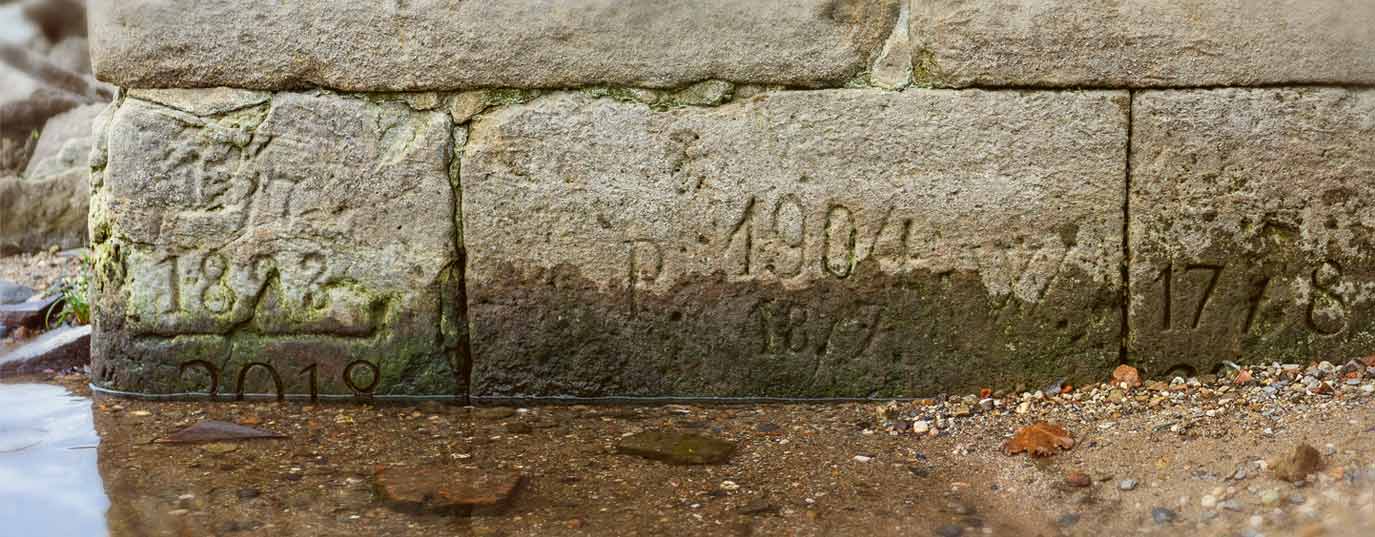Elbe's prophetic stones emerge as a reminder of global warming
The ancient inscription "If you see me, weep" is carved on one of the stones that the European drought has left exposed in the Elbe River. Its warning is more significant than ever.
 If we look up the term "emergency" in the dictionary, we will find the following meanings: 1. f. The action and effect of emerging. 2. f. An event, accident that occurs. 3. f. A situation of danger or disaster that requires immediate action. Well, the stones that have emerged in the Elbe speak to us of an emergency, although this time a climatic one. Their messages, much older than the IPCC's devastating reports on global warming, take us back to times of drought and famine centuries ago, but they’re still relevant today.
If we look up the term "emergency" in the dictionary, we will find the following meanings: 1. f. The action and effect of emerging. 2. f. An event, accident that occurs. 3. f. A situation of danger or disaster that requires immediate action. Well, the stones that have emerged in the Elbe speak to us of an emergency, although this time a climatic one. Their messages, much older than the IPCC's devastating reports on global warming, take us back to times of drought and famine centuries ago, but they’re still relevant today.
Known as hungerstein (hunger stone in German), these are inscriptions on rocks in the bed of Central European rivers such as the Elbe or the Rhine that are exposed in times of acute drought. It’s the way in which the inhabitants of these regions recorded particularly difficult years in their lives. For example, one of those that surfaced in the drought of 2018 revealed an eloquent inscription on the Elbe as it flows through the Czech Republic. Dated 1616, it read: "If you see me, weep".
A Czech research group found inscriptions on the same rock corresponding to the droughts of 1417, 1616, 1707, 1746, 1790, 1800, 1800, 1811, 1830, 1842, 1868, 1892 and 1893. These fateful dates show that drought is not a phenomenon exclusive to our time. However, they’re more recurrent today than ever before. This is indicated by one of the latest UN reports, which confirms that the number and duration of droughts have increased by 29% since 2000.
Fortunately, the Elbe hunger stones also leave room for hope. On one of them we read: "When this stone is gone, life will blossom again".
Drought brings back dinosaurs and warships
The drought situation across the globe has served to reveal many artefacts and traces of the past. Some of these remnants date back millions of years, while others remind us of tragedies much closer to current times. Here are some of the most unusual finds from the summer of 2022:
- Dinosaur tracks. Dinosaur Valley State Park in Texas, USA, has witnessed the discovery of dinosaur footprints dating back 113 million years ago. Most of them, located in a dry riverbed, correspond to an acrocantosaur specimen.
- An ancient city in Iraq. The remains of Kemune, a Bronze Age city built 3,400 years ago, have been uncovered in the Mosul reservoir, which is fed by the Tigris River. Authorities in the Arab country claim that the river has not been this dry for millennia.
- A Welsh village. The village of Llanwddyn in Wales was submerged by the construction of a reservoir in the late 19th century, which at the time was the largest man-made lagoon in Europe. The remains of Llanwddyn haven’t been seen since the drought of 1976.
- German warships. A more recent remnant is the twenty or so German warships from World War II - some of them laden with explosives - that have been exposed due to the dramatic drop in the Danube's water level.
Sources

